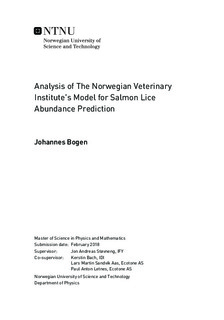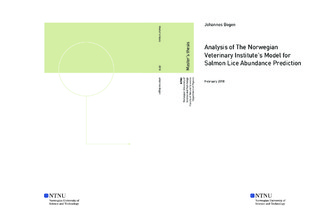| dc.description.abstract | Empirical studies have found that lice from salmon farms are a main source of infection of wild salmonids. Due to Norway s responsibility to conserve wild stocks of salmon, Veterinærinstituttet has created a statistical model to predict the lice infections of wild salmon. In this work, this model has been analyzed with respect to how well is predictions correlate with reported weekly manual lice counts from Norwegian salmon farms between 2012 and 2017, and how different factors affects its predictive abilities. The model was found to perform best before 2016, in the summer, when the water temperature is 8 ◦C to 11 ◦C and rising, and when a farm has few neighboring farms in its vicinity. The model was also compared to the hydrodynamical model created by Havforskningsinstituttet. While Veterinærinstituttet s model was found to be generally better, it was outperformed by the former when predicting lice abundances on farms with low current velocities. A set of new models were also created using linear- and support vector regression. These were on par with Veterinærinstituttet s model during its best months, but superior the rest of the year, illustrating the possibilities for using machine learning in this field . | |

